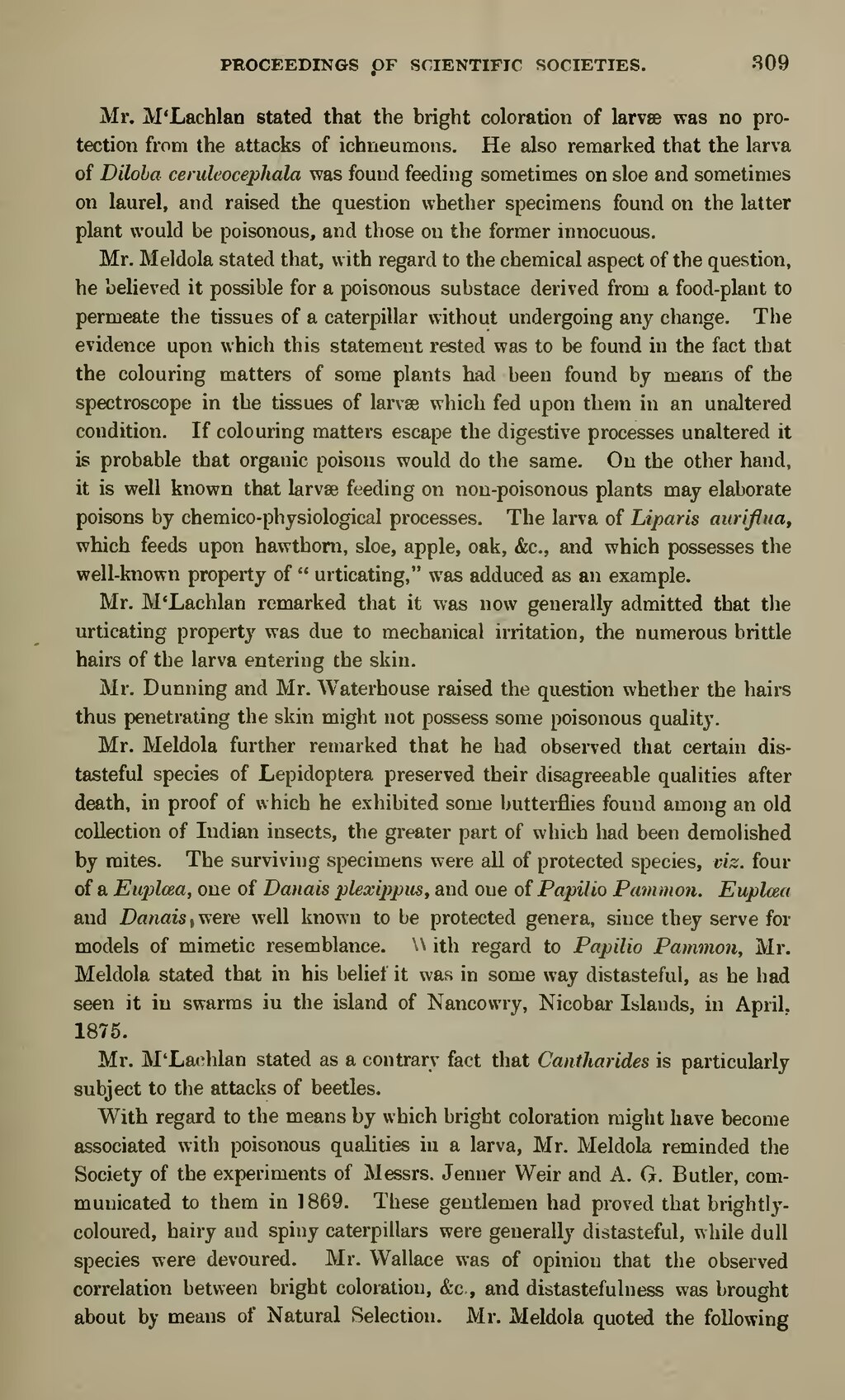Mr. M'Lachlan stated that the bright coloration of larvæ was no protection from the attacks of ichneumons. He also remarked that the larva of Diloba ceruleocephala was found feeding sometimes on sloe and sometimes on laurel, and raised the question whether specimens found on the latter plant would be poisonous, and those on the former innocuous.
Mr. Meldola stated that, with regard to the chemical aspect of the question, he believed it possible for a poisonous substace derived from a food-plant to permeate the tissues of a caterpillar without undergoing any change. The evidence upon which this statement rested was to be found in the fact that the colouring matters of some plants had been found by means of the spectroscope in the tissues of larvæ which fed upon them in an unaltered condition. If colouring matters escape the digestive processes unaltered it is probable that organic poisons would do the same. On the other hand, it is well known that larvæ feeding on non-poisonous plants may elaborate poisons by chemico-physiological processes. The larva of Liparis auriflua, which feeds upon hawthorn, sloe, apple, oak, &c., and which possesses the well-known property of "urticating," was adduced as an example.
Mr. M'Lachlan remarked that it was now generally admitted that the urticating property was due to mechanical irritation, the numerous brittle hairs of the larva entering the skin.
Mr. Dunning and Mr. Waterhouse raised the question whether the hairs thus penetrating the skin might not possess some poisonous quality.
Mr. Meldola further remarked that he had observed that certain distasteful species of Lepidoptera preserved their disagreeable qualities after death, in proof of which he exhibited some butterflies found among an old collection of Indian insects, the greater part of which had been demolished by mites. The surviving specimens were all of protected species, viz. four of a Euplœa, one of Danais plexippus, and one of Papilio Pammon. Euplœa and Danais were well known to be protected genera, since they serve for models of mimetic resemblance. With regard to Papilio Pammon, Mr. Meldola stated that in his belief it was in some way distasteful, as he had seen it in swarms in the island of Nancowry, Nicobar Islands, in April, 1875.
Mr. M'Lachlan stated as a contrary fact that Cantharides is particularly subject to the attacks of beetles.
With regard to the means by which bright coloration might have become associated with poisonous qualities in a larva, Mr. Meldola reminded the Society of the experiments of Messrs. Jenner Weir and A.G. Butler, communicated to them in 1869. These gentlemen had proved that brightly-coloured, hairy and spiny caterpillars were generally distasteful, while dull species were devoured. Mr. Wallace was of opinion that the observed correlation between bright coloration, &c., and distastefulness was brought about by means of Natural Selection. Mr. Meldola quoted the following
